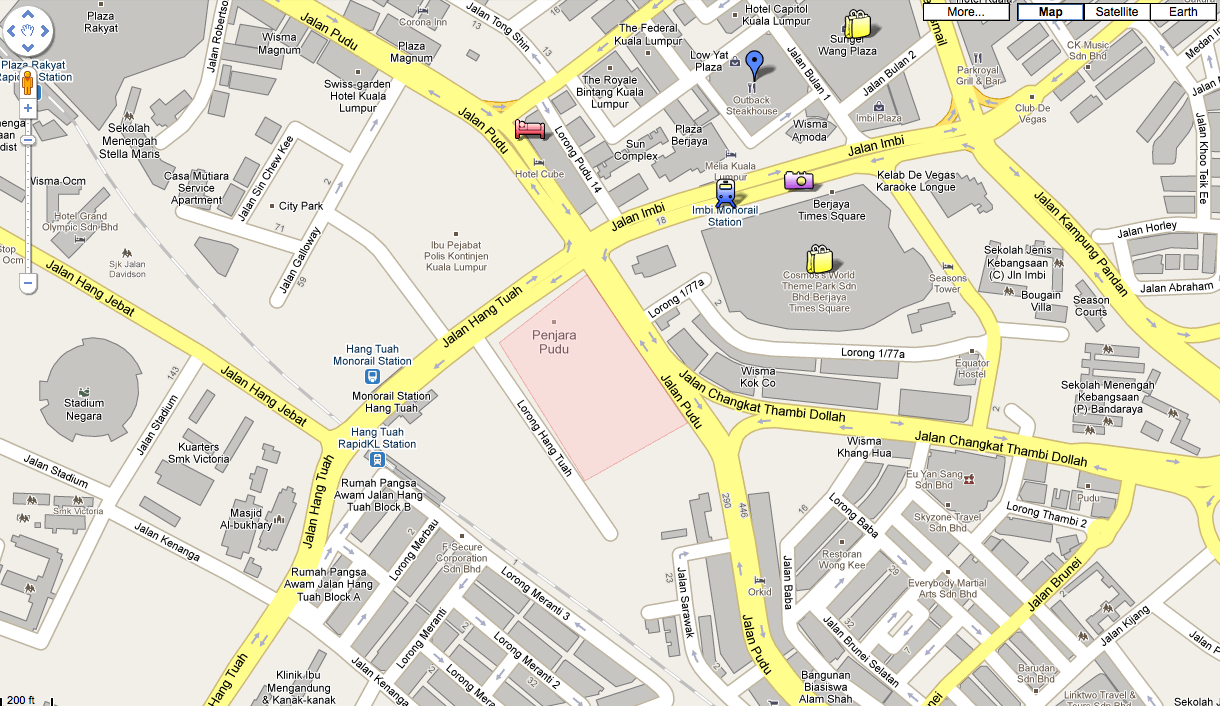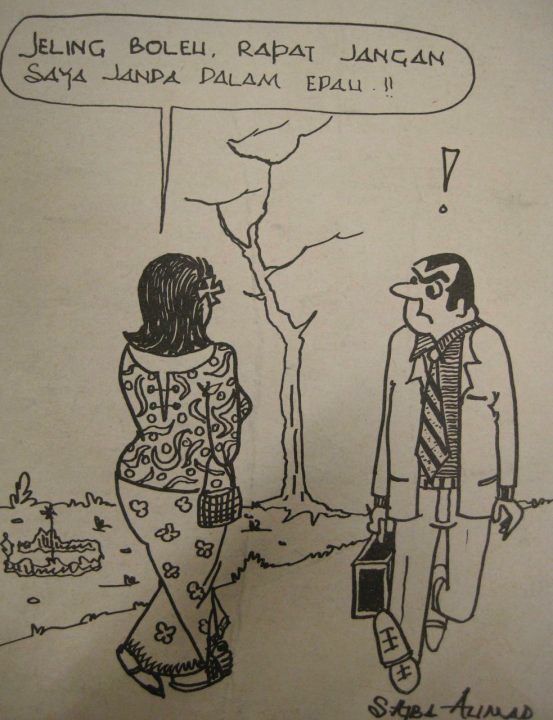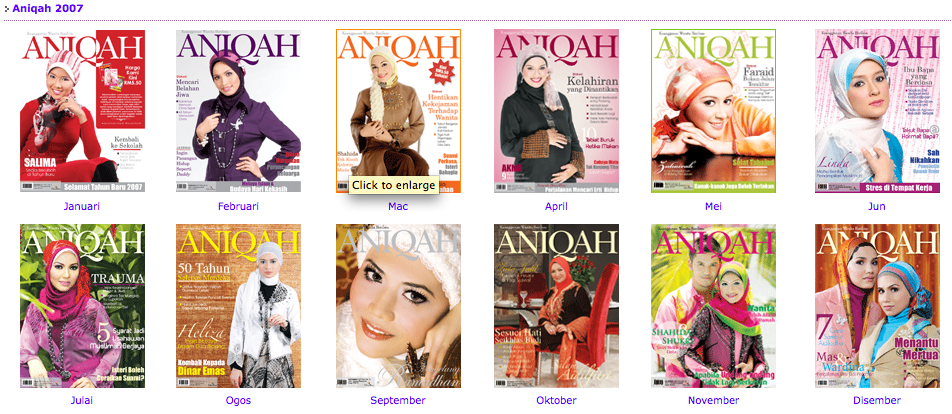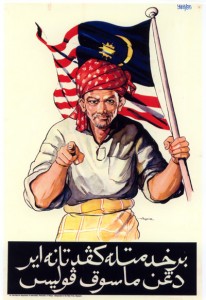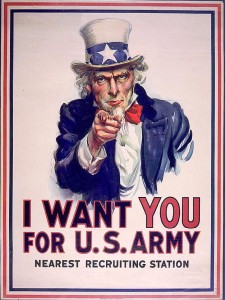PUDU Gaol demolishing process took place today.
Photo Pudu Jail 1895: Arkib Negara Malaysia.
Credit video: Dick Chua for an excellent captures of the moment.
See The Star newspaper for the news.
It is an unfortunate to know that another Malaysian old historical building, that has been standing in Pudu areas, Hang Tuah road for more then 100 years (115 to be exact) will soon be gone and turn to dust today. Many Malaysian agreed with this decision but not many will go further to fight for it. Media coverage try to get as much voices and opinion to maintained the process from happening. As proposed by government the Pudu Goal area which includes almost 10 hectares of land will be transformed to a new development project that according to the Draft KL City Plan 2020 the prison site has been earmarked for development. Previous plans for the site have included a proposal for a mixed commercial and residential development, which included a 33 storey office block, a shopping complex, a 43 storey hotel and a 44 storey serviced apartment tower. I understood that Malaysia want to promoted and developed the country, showing how modern and developed the countrys are, but what I don’t understand it why there is a need to demolished the historical building in order to achieve that aim. Sad, disappointed and devastating with the Malaysian government action. Bernama a Malaysian national news agency, captured some of the disappointment from many Malaysian.
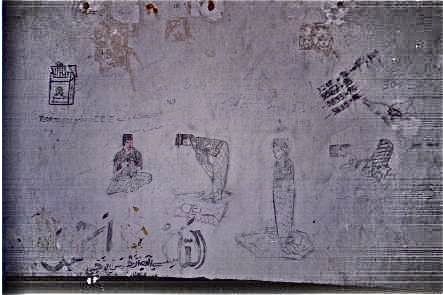
I would imagine that the Pudu Jail area can be reconstruct as a Malaysian national archive hub, with cafes around, some galleries, or some parts of it could be an extension of Central Market, where artists, actors and students will be able to practices and get inspirations from the space. It can be a place where film director will get their inspiration to make some scene there, or a band can conduct some nice entertainment show around the square. The wall surround it is just perfect to cover and take away the noise from outside the areas, the busy vehicles and traffics. The whole areas can be different if there is more thought given and voices are heard in the process. Some people would say that the Jail space are home for many bad spirits. Typical Malaysian who are believer of spirits, well, why not, but didnt we also aware that the bad spirit will only stay when there is other bad spirits around. If we make the space livable and enjoyable, the bad spirit will have to fight with the good spirits. Yes, that is another agenda that I think supports the demolishment process of the building. Getting rid of bad spirits by destroying the building and build a new fancy one. What if the bad spirits stays?
May be it will be a bit to ambitious to say that it could or possible to be like the Le Lourve museum in France. Yes, Le Lourve was a museum before, and been kept as a museum. So what if its a jail? What matters is the site of the jail (10 hectares) will give us possibilities to explore the areas, renew and give the space a new energy and feeling. By keeping the façade and modified the inner space. It will be a great experiences for the younger generations to explore and learn about the space, not only for tourist. It will be a center for discussion or even a hub for conference where people discuss about the historical sites and the significant it will give to the nation.
Badan Warisan captured some interesting prisoners wall cell drawing.
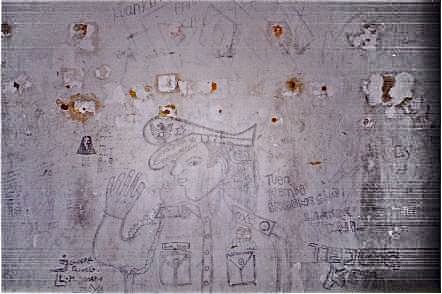
More images on Pudu Jail can be trace from other sites such as Skyscraper munirakirana
Click here for larger view


